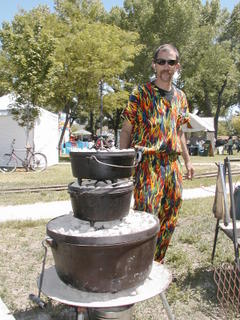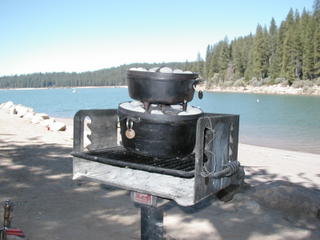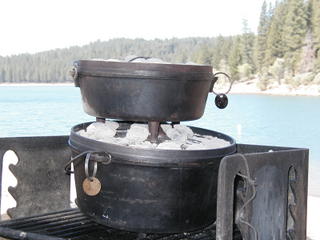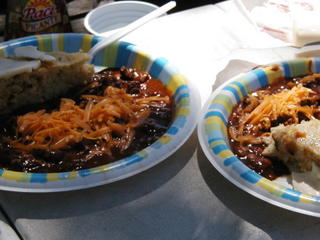GRILLED LEG OF LAMB WITH ROSEMARY, ROASTED PEARS, AND BLACK PEPPER POLENTA
Have your butcher butterfly the lamb for you. I added the juice from one lemon to the oil and garlic mixture.
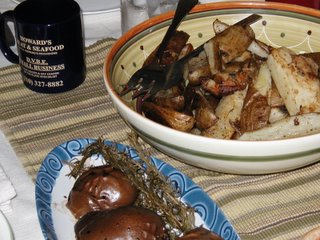 1 head garlic, cloves removed and peeled
1 head garlic, cloves removed and peeled2 fresh rosemary sprig, needles stripped from stem, plus 8 sprig
Extra-virgin olive oil
Salt and fresh ground black pepper
5 to 7 pound leg of lamb, boned butterflied and surface fat removed
Salt and pepper
8 red-skinned pears
4 tablespoons balsamic vinegar
8 fresh rosemary sprig
Black Pepper Polenta, recipe follows
Preheat oven to 350 degrees F. In a blender, combine the garlic, rosemary, and 3/4-cup of oil; season with salt and pepper. Puree until everything comes together to form a paste; set aside for a few minutes to let the flavors marry.
Lay the lamb out flat, open like a book. Score the surface lightly with a paring knife. Rub the lamb with the garlic paste, being sure to get in the incisions. Roll up the lamb and tie with butcher's twine to hold the roast together.
Prepare an outdoor gas or charcoal grill. Season the lamb generously with salt and pepper, and then place it on the hot grill (put it on the top rack if you are using a gas grill). Sear the outside of the meat, turning, until brown all around, but do not char. Close the grill cover and roast for 30 minutes. The lamb is done when the center is still pink and the internal temperature reads 135 degrees. Allow the lamb to stand 10 minutes to let the juices settle before cutting off the twine and slicing.
To prepare the pears, halve the pears lengthwise and cut out the cores. Place the pears face down on a baking pan. Drizzle with 4 tablespoons of oil, toss the 8 rosemary sprig on top, and season with salt and pepper. Bake for 20 to 25 minutes, until the pears are fork tender.
To serve, spoon some polenta on the base of the plate and lay a few slices of the lamb on top; drizzle with a little oil and season with salt and pepper. Put a pear on each plate, face up, and drizzle them with balsamic vinegar. Garnish with a rosemary sprig.
SOFT POLENTA WITH PARMESAN AND BLACK PEPPER
2 quarts chicken stock
1 teaspoon salt
2 cups polenta or yellow cornmeal
1/3 cup heavy cream
2 tablespoons unsalted butter, at room temperature
1 cup freshly grated Parmesan
1 1/2 teaspoons freshly ground black pepper
In a large pot, bring the chicken stock and salt to a boil. Gradually whisk in the cornmeal in a slow steady stream. The liquid will be absorbed and the cornmeal will lock up; don't freak, just whisk through it. Lower the heat and continue to whisk until the polenta is thick and smooth, about 20 minutes. Add the cream and butter; continue to stir until incorporated, about 10 minutes.
Remove from heat, fold in the Parmesan and black pepper and serve.
This recipe by Tyler Florence was adapted from the Food Network website.



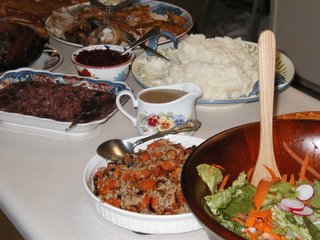









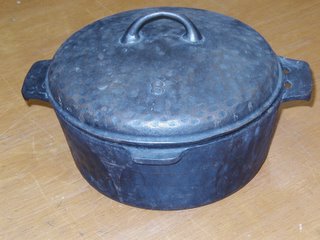

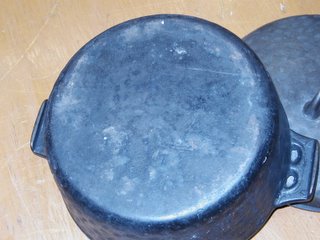
 The inside of the lid. Note the rust. The oven is in very good shape.
The inside of the lid. Note the rust. The oven is in very good shape.





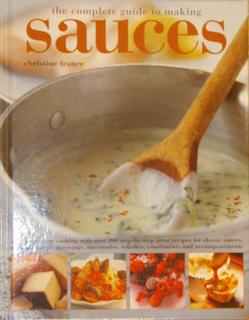

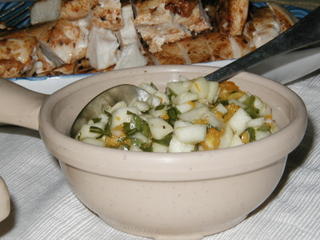

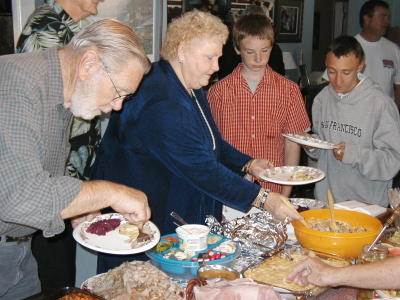 If it weren't for the company, the food would be the best part of any pot luck dinner.
If it weren't for the company, the food would be the best part of any pot luck dinner.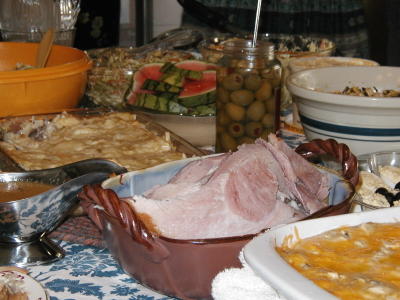

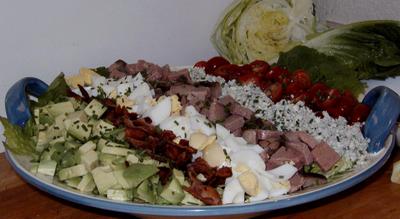 And forget the fresh tomatoes. My mother tried, but failed to pass the Karoly’s summer-long love affair with garden fresh tomatoes on to me. Pass catsup, salsa and canned tomatoes by my plate and I’ll bite. I’ll leave the fresh tomatoes to others.
And forget the fresh tomatoes. My mother tried, but failed to pass the Karoly’s summer-long love affair with garden fresh tomatoes on to me. Pass catsup, salsa and canned tomatoes by my plate and I’ll bite. I’ll leave the fresh tomatoes to others.

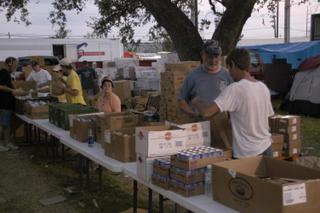
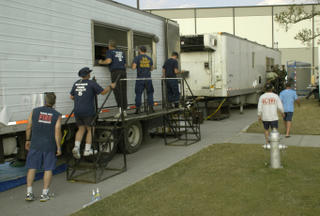
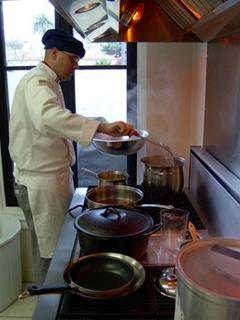 CS1 (SW) Brandon Parry became the first Sailor to earn the title of Personal Certified Executive Chef (PCEC). Pictured above he is at the stove taking the practical cooking exam for the certification.
CS1 (SW) Brandon Parry became the first Sailor to earn the title of Personal Certified Executive Chef (PCEC). Pictured above he is at the stove taking the practical cooking exam for the certification. I suspect that this recipe was called lightning cake because it’s made “lightning fast.” The original cake is a brownie-like dessert with a sugar-cinnamon topping. I adapted it by folding diced Bartlett pears and sliced almonds into the batter. And a used a crumb topping made from oatmeal, flour and sugar.
I suspect that this recipe was called lightning cake because it’s made “lightning fast.” The original cake is a brownie-like dessert with a sugar-cinnamon topping. I adapted it by folding diced Bartlett pears and sliced almonds into the batter. And a used a crumb topping made from oatmeal, flour and sugar. Chef Samuel Glass, center, passes on cooking tips to CS2 Tawney Cortezparedes, left, and CS3 Michelle Harvey, both USS Tarawa (LHA 1) crew members. Glass visited the San Diego-based amphibious assault ship as part of the Naval Supply Systems Command's Adopt-A-Ship program during a recent pre-deployment training exercise off the coast of Southern California in mid May. U.S. Navy Photo by PHAN (AW) Kelly Morgan.
Chef Samuel Glass, center, passes on cooking tips to CS2 Tawney Cortezparedes, left, and CS3 Michelle Harvey, both USS Tarawa (LHA 1) crew members. Glass visited the San Diego-based amphibious assault ship as part of the Naval Supply Systems Command's Adopt-A-Ship program during a recent pre-deployment training exercise off the coast of Southern California in mid May. U.S. Navy Photo by PHAN (AW) Kelly Morgan.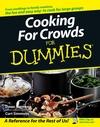
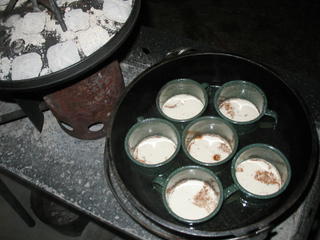 Cee Dub’s recipe is essentially the same one that Grandma Bertha Karoly cooked in the 1930s for three growing boys (dad, his brother and their first cousin). Grandma Bert’s copy of Any One Can Bake (Royal Baking Powder Co.: New York City, 1927) is scribed full of recipes, notes and prices from the Depression. (Do you know that a 10-pound bag of granulated sugar cost 53 cents in 1937? That’s an 18 cent increase from 1932!)
Cee Dub’s recipe is essentially the same one that Grandma Bertha Karoly cooked in the 1930s for three growing boys (dad, his brother and their first cousin). Grandma Bert’s copy of Any One Can Bake (Royal Baking Powder Co.: New York City, 1927) is scribed full of recipes, notes and prices from the Depression. (Do you know that a 10-pound bag of granulated sugar cost 53 cents in 1937? That’s an 18 cent increase from 1932!)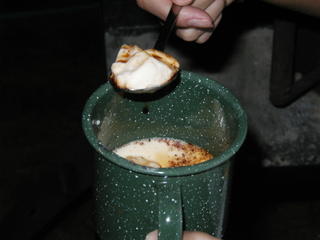 Just be sure to temper the egg mixture. To temper, slowly drizzle about 1/2-cup of the warm milk into the egg and sugar mixture. This’ll bring the egg mixture up to temperature without cooking the eggs. (Scrambled eggs custard doesn’t appeal to anyone!) The slowly whisk the remaining milk into the egg mixture.
Just be sure to temper the egg mixture. To temper, slowly drizzle about 1/2-cup of the warm milk into the egg and sugar mixture. This’ll bring the egg mixture up to temperature without cooking the eggs. (Scrambled eggs custard doesn’t appeal to anyone!) The slowly whisk the remaining milk into the egg mixture.